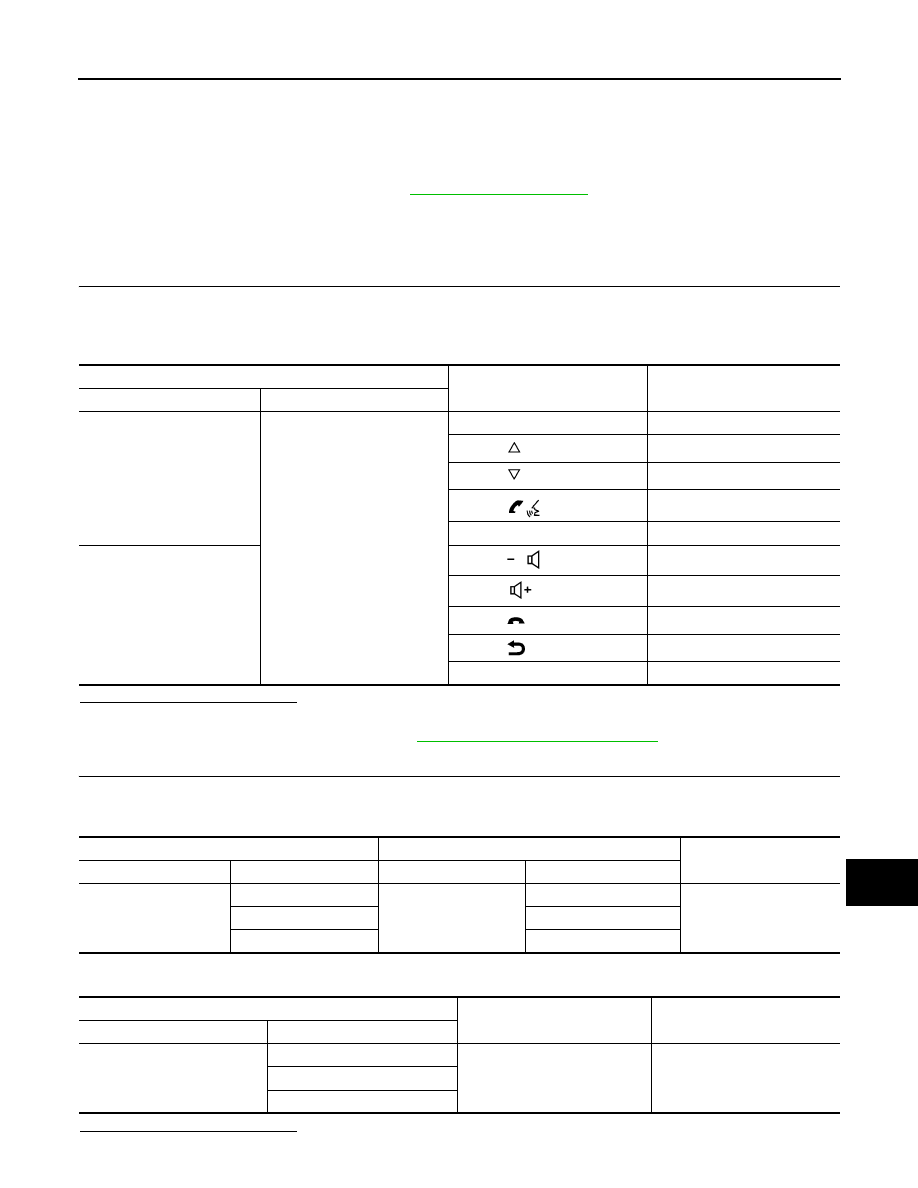Qashqai J11. Audio, Visual & Navigation System - part 16

AV
STEERING SWITCH
AV-241
< DTC/CIRCUIT DIAGNOSIS >
[NAVIGATION]
C
D
E
F
G
H
I
J
K
L
M
B
A
O
P
STEERING SWITCH
Diagnosis Procedure
INFOID:0000000010435734
Regarding Wiring Diagram information, refer to
.
1.
CHECK STEERING WHEEL AUDIO CONTROL SWITCH RESISTANCE
1.
Turn ignition switch OFF.
2.
Disconnect combination switch connector M66.
3.
Check resistance between the terminals of combination switch connector M66.
Is the inspection result normal?
YES
>> GO TO 2.
NO
>> Replace steering switches. Refer to
AV-261, "Removal and Installation"
.
2.
CHECK HARNESS BETWEEN COMBINATION METER AND COMBINATION SWITCH
1.
Disconnect combination meter connector M51 and combination switch connector M66.
2.
Check continuity between combination meter connector M51 and combination switch connector M66.
3.
Check continuity between combination meter connector M51 and ground.
Is the inspection result normal?
Combination switch connector M66
Condition
Resistance
Ω
(Approx.)
Terminal
Terminal
29
23
Depress SOURCE switch.
1
Depress
switch.
121
Depress
switch.
321
Depress
switch.
723
Depress ENTER switch.
2023
24
Depress
switch.
1
Depress
switch.
121
Depress
switch.
321
Depress
switch.
723
Depress DISPLAY switch.
2023
Combination meter
Combination switch
Continuity
Connector
Terminal
Connector
Terminal
M51
22
M66
29
Yes
23
24
21
23
Combination meter
Ground
Continuity
Connector
Terminal
M51
22
—
No
23
21